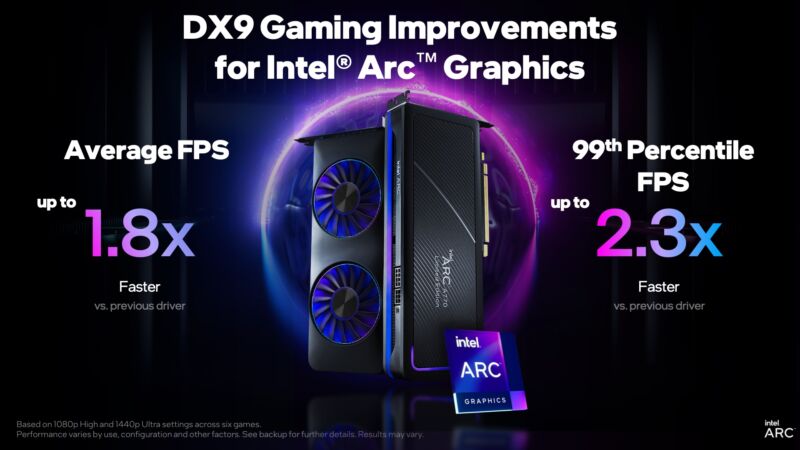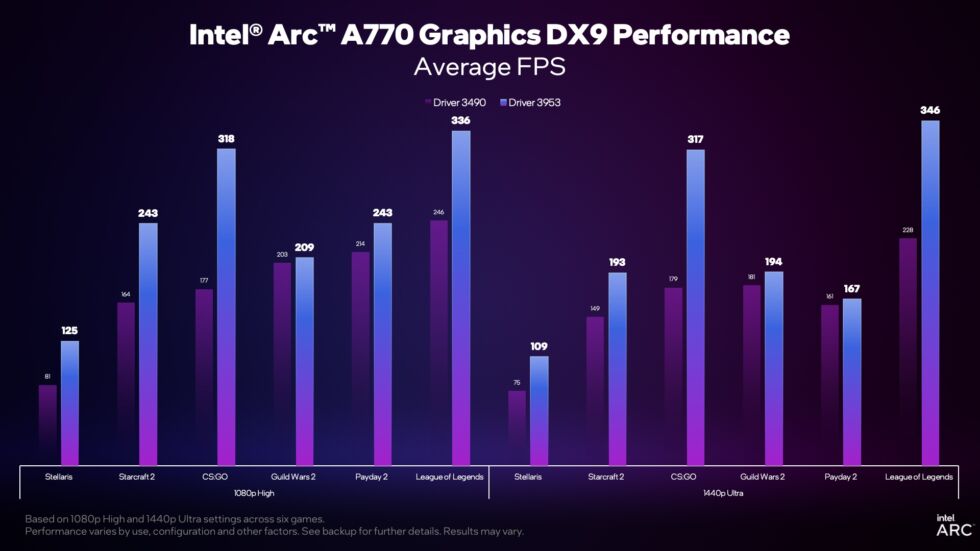
In the run-up to the launch of Intel's Arc graphics cards, the company emphasized for months that the cards might not perform well in games that didn't use newer graphics APIs like Vulkan and DirectX 12. The GPUs are actually quite price-competitive with aging midrangers like Nvidia’s GeForce RTX 3060 if you’re playing newer games, but performance in older games is mixed.
For Intel Arc owners attracted to the cards’ price, salvation may come in the form of continued driver updates. Since the October launch of the A770 and A750, Intel has released a handful of driver updates, each of which fixed specific bugs or provided small performance improvements in individual games. But in today's beta driver release (31.0.101.3959, for those keeping track), Intel is offering a "significant" boost in older DirectX9 titles, with frame rates that can improve by as much as 80 percent.
DirectX9 was the graphics API of choice in the Windows XP era, and the Windows XP era lasted for a very long time. The API is also used in still-popular multiplayer games like Counter-Strike: Global Offensive, League of Legends, Team Fortress 2, and Starcraft II, making performance improvements in DirectX9 games particularly noteworthy.

Because these are pretty old games we're talking about, these performance improvements aren't necessary to hit 60 frames per second on the A770 (though the improvements also apply to the entry-level Arc A380 GPU, which might need the extra help. These increases will mostly benefit competitive players, for whom super-high frame rates and low response times are critical. Some of the increases from the new driver are minor, but at 1080p, Intel says Stellaris and Starcraft II frame rates improved by around 50 percent, while League of Legends improved by 37 percent and CS: Go went up by 80 percent.
Intel had previously said it used a Microsoft-provided translation layer to support DirectX9 games. With these improvements, the company says it's introducing a "hybrid" approach, using the D3D9On12 layer "when a better experience can be delivered" and a native implementation when it benefits performance. This makes some sense—Intel can use translation for any given 15-year-old DirectX9 PC game while providing a more optimized native implementation for the DirectX9 games that lots of people are still playing.
Intel will decide when to switch individual titles over to the native DirectX9 implementation rather than the translated one and will deliver those changes via driver updates along with other improvements.



3175x175(CURRENT).thumb.jpg.b05acc060982b36f5891ba728e6d953c.jpg)
Recommended Comments
There are no comments to display.
Join the conversation
You can post now and register later. If you have an account, sign in now to post with your account.
Note: Your post will require moderator approval before it will be visible.